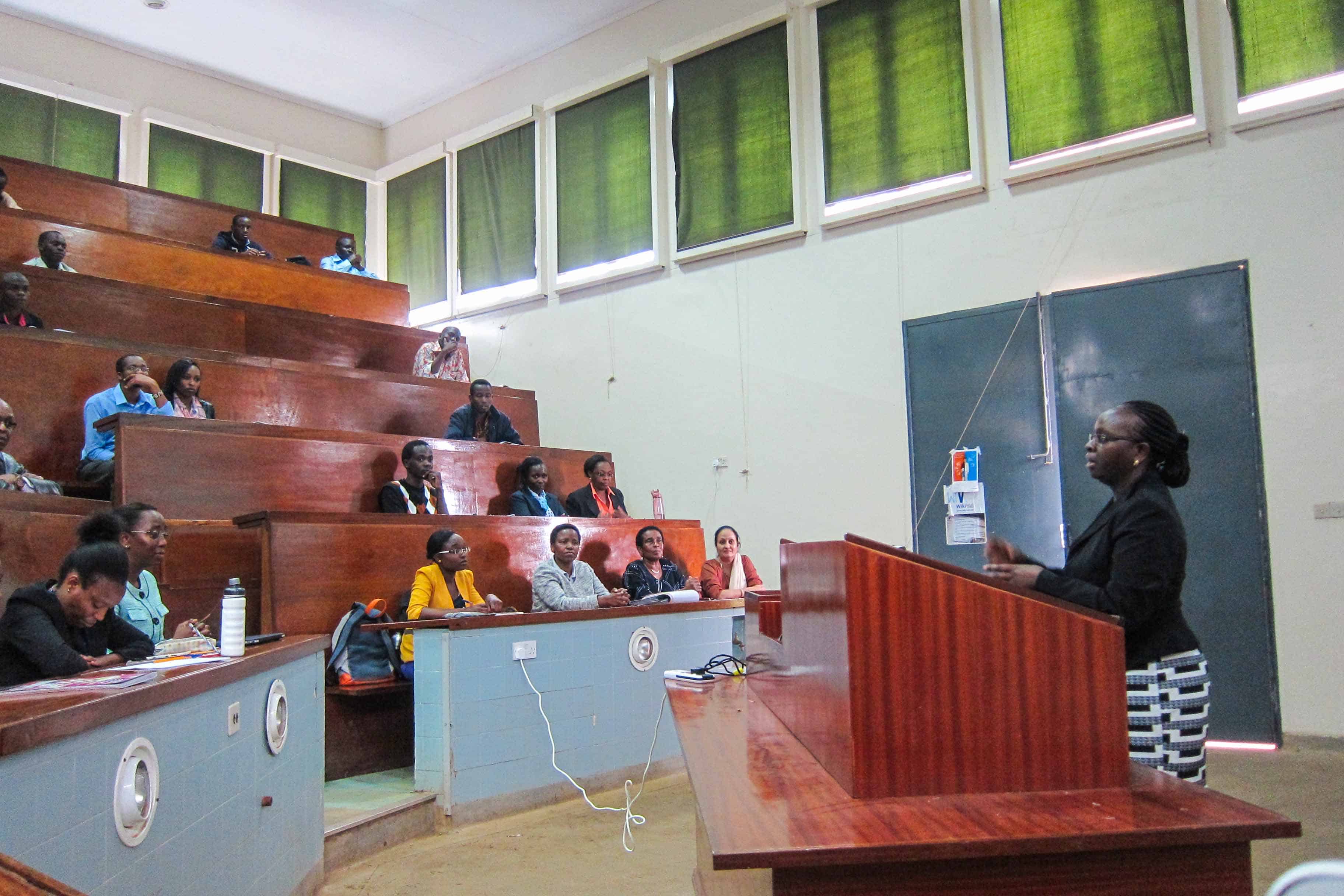November 30, 2015

While last week marked the first global antibiotic awareness week, it was the third annual antibiotic awareness week to take place in Kenya. This year’s events were a collaboration between the Global Antibiotic Resistance Partnership (GARP), the Ministry of Health (MoH) and the Infection Prevention Network-Kenya (IPNET-K), and I was fortunate enough to participate in the events with our colleagues.
As a part of the week’s activities, representatives from the MoH and GARP gave a series of educational talks on antibiotic resistance. On Thursday, November 12th, a lecture was given to the Veterinary School of the University of Nairobi, attended by students who will go on to work directly with farmers, impacting the front lines of antibiotic prescribing and treatment. On Monday, November 16th, the representatives spoke to students at the Kenya Medical Training College (pictured below), where 80 percent of Kenya’s medical practitioners are trained. These students are future physicians, who will be faced directly with the task of appropriately prescribing antibiotics to their patients. By targeting students, GARP hopes to educate future leaders as they form prescribing habits, encouraging them to make an active difference, while also raising awareness among the public.

“Let us protect the life of antibiotics for the next generation by being thoughtful about when we use them to treat animals—we don’t want to hand down a lifeless set of antibiotic molecules,” Dr. Revathi Gunturu, associate professor, Aga Khan hospital and IPNET-K chair (and long-time GARP-Kenya working group member), told the veterinary students.
The main feature of this year’s awareness week was the Regional Infection Prevention and Control Conference, hosted by IPNET-K in collaboration with GARP in Naivasha, Kenya. Immediately following, a two-day workshop on antimicrobial stewardship took place, on the 20th-21st. IPNET brought together more than 200 experts in infection and control from Kenya, countries in the region and other locations around the globe.
“The Ministry of Health and Ministry of Livestock, Agriculture and Fisheries are at the forefront in the campaign against AMR [antimicrobial resistance],” explained Dr. Eveline Wesangula, GARP-Kenya coordinator and MoH AMR focal point, in her presentation. “The process of developing a national action plan is ongoing and relies on the engagement of all of society to ensure that it is inclusive and coherent.”
While in Naivasha, GARP and MoH representatives also spoke at the country referral hospital on the issue of hospital antimicrobial resistance and stewardship. Meanwhile, in Nairobi, the MoH launched a revised IPC policy and guidelines on November 20th. The guidelines include a new section on antimicrobial stewardship programs.
Infection control is fundamentally connected to antibiotic resistance: resistance is driven by antibiotic use, and by preventing infections from taking place, the need for antibiotics is avoided. This is particularly true in hospitals, where the sickest patients circulate, raising the risk of transmission of infections, including from resistant bacteria. Strengthening hospital infection prevention and control programs and antibiotic stewardship programs is one of CDDEP’s big six recommendations for inclusion in national strategies to combat antibiotic resistance.
Here in Kenya, that step is being successfully implemented through collaboration and government ownership. It was an excellent week of presentations and cooperation.
Mirfin Mpundu, Executive Director of the Ecumenical Pharmaceutical Network (EPN) and node coordinator, ReAct, saw the conference as a necessary spark for action: “AMR presents an opportunity for all of us to work together. The present moment is an opportune time, with momentum around the world in the health sector focused on the AMR issue. It is an opportunity we should not miss.”
Molly Miller-Petrie is a Senior Research Analyst at CDDEP.
Images courtesy Molly Miller-Petrie











